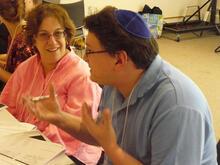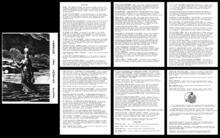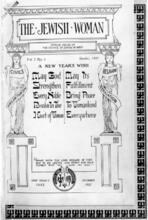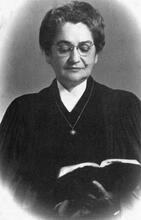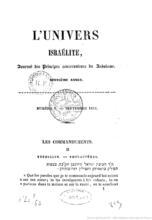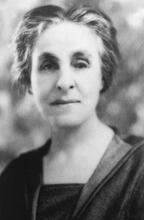Rezadeiras among Bene Anusim in Portugal
Rezadeiras, prayer-women, began to play an important role in crypto-Jewish practice after the late fifteenth-century Expulsions from Spain and then Portugal forced those who wanted to live as Jews to do so in secret. As hidden Jews developed strategies for maintaining secret Jewish identity, women played an increasingly important role in religious and ritual life. Women often recited prayers, rather than singing, in a low voice that sounded like chatting softly in the kitchen while preparing a meal.
The Crypto-Jews of Portugal
Rezadeiras (literally “prayer-women”; “rezar” means pray in Portugeuse) were female guardians of the prayers and rituals of the Portuguese Crypto-Jews. The term “Crypto-Jews” is used here in the sense of “hidden” or “secret” Jews, replacing the problematic term “Marrano,” which means “pig” in Spanish, though not in Portuguese. The hidden Jews themselves have used terms such as “A Nação,” literally “The Nation” or “The People,” or “Gente da Nação” (People of the Nation; or simply “Judeu” (feminine Judea): “Jewish.” Recently, the term “Bnei Anusim” (offspring of the coerced ones) tends to replace “Crypto-Jews,” sometimes shortened to “anusim.”
The history of the Crypto-Jews of Spain and Portugal is a long, complex story (see Gitlitz, Martins, Melammed). Briefly, considerably before the Expulsion of the Jews in 1492 from what is now Spain, earlier pogroms and the establishment of the Spanish Inquisition in 1478 gave rise to hidden Jewish practices. Jews already lived in Portugal, and their numbers were significantly increased by the influx of Jews from Spain following the Edict of Expulsion. Portugal’s initial reluctant acceptance of Jewish refugees upon payment turned to more cruelty. Eventually it, too, expelled the Jews, although only from Lisbon and on a specific day, when most of the Jews who did show up to leave were instead forcibly baptized and sent back to live as sudden New Christians. Because the Inquisition was not established in Portugal until 1536, decades after its institution in Spain, those New Christians who continued to live as secret Jews had some time to develop ways to practice their religion in secret.
Women’s Roles Among Crypto-Jews
As the hidden Jews developed strategies for maintaining a secret Jewish identity, women began to play an increasingly important role in religious and ritual life. Any large gathering outside the Church was suspect, and in a small village, a “large” gathering could consist of only a few people. Also, rural Crypto-Jewish men often worked as muleteers and were absent for long periods of time, leaving the women to keep community practices functioning (see Melammed for a detailed discussion of women’s roles). It was mostly women, especially older women, who presided over rituals and ceremonies.
Samuel Schwarz, author of the first modern monograph on the Crypto-Jews of Belmonte, described a 1917 encounter in which he came to this realization. When the women asked him to recite a prayer to prove that he himself was Jewish, he recited the iconic “Shema Israel,” the Jewish affirmation of monotheism. On hearing him say “Adonai,” the women immediately covered their eyes, as they continue to do today. The oldest proclaimed that he was Jewish, and he was henceforth accepted by them (Schwarz 23-24; Canelo, García, Novinsky, Paulo).
Reciting Prayers in Secret
In the 1990s, I met some of the last of the old rezadeiras in rural Portugal, in Belmonte and in villages in the northeast, Tras-os-Montes. This was just before the internet became commonplace there; Jewish-related tourism was just beginning to develop in Tras-os-Montes and starting to intensify in Belmonte. In Tras-os-Montes, little if any active practice remained, but elderly women could remember practices. In Belmonte, women recited prayers in a prosaic setting, for example in groups of two, three, or four while preparing the mid-day meal. They recited the prayers rather than singing, and did so in a low voice, rapidly, often repeating each prayer several times over. Even during the summer, when the street door was generally left open during the day with just a cloth or beaded curtain in the doorway, one could barely hear their voices from outside; they sounded like women chatting softly in the kitchen as they prepared a meal. By this time any actual danger had long passed, but it seems reasonable to suppose that this was a strategy that had developed over time to allow women to recite prayers in a setting that did not attract suspicion. (See Fontes and Mea for studies of the prayers.)
As early as 1921, the rezadeiras were described as reciting rather than singing prayers (Bension p, 17); other accounts mention them singing, but it is unclear whether this was religious material or local songs. In my fieldwork experience, and according to a 1920s description in Tras-os-Montes, certain playparty dance-songs (jogos de roda) were enacted by adults, not children, around Passover. These are all well-known Portuguese songs, but community members identified certain of them as “ours,” i.e. specifically Jewish. The words of other local songs were sometimes quietly adapted to suit Crypto-Jewish life (Cohen 305).
Although no musical transcriptions exist, some reports in the late fifteenth and the sixteenth centuries recount hidden Jews singing melodies (Cohen 297). Over the years, recitation is likely to have replaced singing for safety reasons: if it was dangerous to avoid pork, to wash clothes and clean the house before the sabbath, it would have been dangerous to sing melodies different from those of one’s Catholic neighbours. The prayers are in Portuguese, though several include the Hebrew word “Adonai.”
The only prayer habitually sung is a version of a narrative ballad about the crossing of the Red Sea sung during Passover. Its melody is not archaic and resembles local folk tunes; Schwarz’s book includes a musical transcription (Schwarz 93-94), and he remarks that the melody is “oriental and exotic” (Schwarz 46-47), although the melody today, barely changed a century later, has no traits suggesting that characterization. It was part of the Passover ritual of “cutting the water” with olive tree branches, preferably near a running stream, recalling Moses with his staff at the waters of the Red Sea. Another narrative ballad is sung, but not as a prayer, and also to a folk tune; its text suggests that it is unlikely to date from before the beginning of the twentieth century. Ballads recited as prayers by the rezadeiras seem to have focused on themes of danger, faith, and redemption: Jonah and the whale, the sacrifice of Isaac, Daniel in the lions’ den (Cohen 301-2; Fontes).
Specific focus on women in Belmonte is featured in the work of María Antonieta García 1999, and on the prayers themselves, in Manuel da Costa Fontes. Prayer texts were published in 1925 by Schwarz (1925/1993), and in the magazine Ha-Lapid (“the torch”). The latter was edited by the colourful “Apostle of the Marranos,” Captain Arturo de Barros Basto, and delivered to emergent Jewish communities in different areas of Portugal. Prayers were later published by other authors, including local researchers María Antonieta García and David Canelo. Literate Crypto-Jewish women in Belmonte often used Schwarz or HaLapid as references when they needed reminders for long prayers whose words they did not completely recall.
Today, if any rezadeiras are still practicing, they seem to have returned to secrecy. Most of those I met in person have passed away, and for the most part their daughters and granddaughters have either returned to “normative” Judaism, formally or otherwise, or chosen not to identify actively as Jewish. A series of temporary rabbis in Belmonte, all Orthodox, perhaps hastened the disappearance of any easily observed practices; more than one woman in Belmonte told me that “the rabbis came and told us not to do this any more.” A few younger women at least have the knowledge of the old rezadeiras; whether or not they practice any rituals is not clear. Active Jewish practice in Belmonte is now controlled by male rabbis, and in Tras-os-Montes there are likely no remaining rezadeiras, and little if any Jewish practice.
Bension, Ariel. “An Echo of the Inquisition.” The Jewish Chronicle,October 21,1921, pp. 16-17.
Canelo, David Augusto. Os Últimos Criptojudeus em Portugal. Belmonte: Centro de Cultura Pedro Álvares Cabral, 1987.
Cohen, Judith. “Maria, sister of Aaron, play your tambourine: Music in the Lives of Crypto-Jewish Women in Portugal.” El Prezente, Studies in Sephardic Culture 3: Gender and Identity (2009): 293-314
Fontes, Manuel da Costa. “Cryptojudaism in Portugal: Prayers and Ballads.” In Chartering Memory: Recalling Medieval Spain, edited by Stacy N. Beckwith, 35-85. New York: Garland, 2000
García, María Antonieta. Judaismo no Femenino. Lisbon, Universidade Nova, 1999.
Gitlitz, David. Secrecy and Deceit, the Religion of the Crypto-Jews. Philadelphia: Jewish Publication Society, 1996.
Martins, Jorge. Portugal e os Judeus, Vol. 3. Lisbon: Nova Vega, 2006.
Mea, Elvira Cunha de Azevedo. 1985. “Orações Judaicas na Inquisição Portuguesa: Século XVI.” In Jews and Conversos: Studies in Society and the Inquisition, edited by Yosef Kaplan, 149-178. Jerusalem: World Union of Jewish Studies, The Magnes Press, Hebrew University, 1985.
Melammed, Renee Levine. Heretics or Daughters of Israel: The Crypto-Jewish Women of Castile. Oxford, New York: Oxford University Press, 1999.
Novinsky, Anita, and A. Paulo. “The Last Marranos.” Commentary 43 (1967): 76-81.
Paulo, Amílcar.Os Judeus Secretos em Portugal. Porto: Labirinto, 1985.
Schwarz, Samuel. Os Cristãos-Novos em Portugal no Século XX. Lisbon: Empresa
Portuguesa de Livros, 1925. [Reimpr. Lisbon: Instituto de Sociologia e Etnologia das Religiões, Universidade Nova, 1993].





